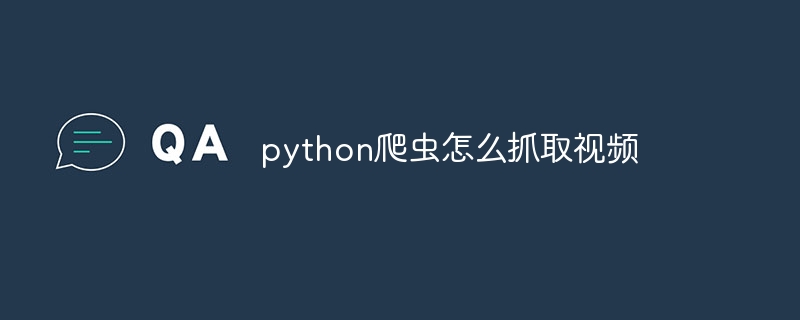◎欢迎参与讨论,请在这里发表您的看法、交流您的观点。
python爬虫怎么抓取视频
ID:19528 / 打印使用 Python 爬虫抓取视频的步骤:安装 requests、BeautifulSoup 和 tqdm 库。获取视频 URL。发送 HTTP GET 请求以获取视频的 HTTP 响应。使用 BeautifulSoup 解析响应中的 HTML。识别包含视频源 URL 的元素,例如 或 标签。使用 tqdm 库下载视频数据。将下载的视频数据保存到本地文件中。

如何使用 Python 爬虫抓取视频
使用 Python 爬虫抓取视频的步骤:
-
安装必要的库:安装 requests、BeautifulSoup 和 tqdm 库。
pip install requests beautifulsoup4 tqdm
- 获取视频 URL:使用浏览器的开发者工具或第三方工具(如 Video DownloadHelper)查找要下载视频的 URL。
-
发送 HTTP 请求:使用 requests 库发送 GET 请求以获取视频的 HTTP 响应。
立即学习“Python免费学习笔记(深入)”;
import requests response = requests.get(video_url)
-
解析 HTML:使用 BeautifulSoup 库解析响应中的 HTML。
from bs4 import BeautifulSoup soup = BeautifulSoup(response.text, "html.parser")
- 定位视频源:识别 HTML 中包含视频源 URL 的元素,例如
-
下载视频:使用 tqdm 库下载视频数据。
import tqdm with open(output_file_path, "wb") as f: for chunk in tqdm.tqdm(response.iter_content(chunk_size=1024)): f.write(chunk)
- 保存视频:将下载的视频数据保存到本地文件中。
示例代码:
import requests from bs4 import BeautifulSoup import tqdm # 获取视频 URL video_url = "..." # 发送 HTTP 请求 response = requests.get(video_url) # 解析 HTML soup = BeautifulSoup(response.text, "html.parser") # 定位视频源 video_source = soup.find("source", {"type": "video/mp4"}) video_src = video_source.get("src") # 下载视频 with open("video.mp4", "wb") as f: for chunk in tqdm.tqdm(response.iter_content(chunk_size=1024)): f.write(chunk)注意事项:
- 确保目标网站允许抓取。
- 使用用户代理来伪装爬虫的行为,避免被网站封锁。
- 根据需要调整下载块大小以优化下载速度和内存使用情况。
